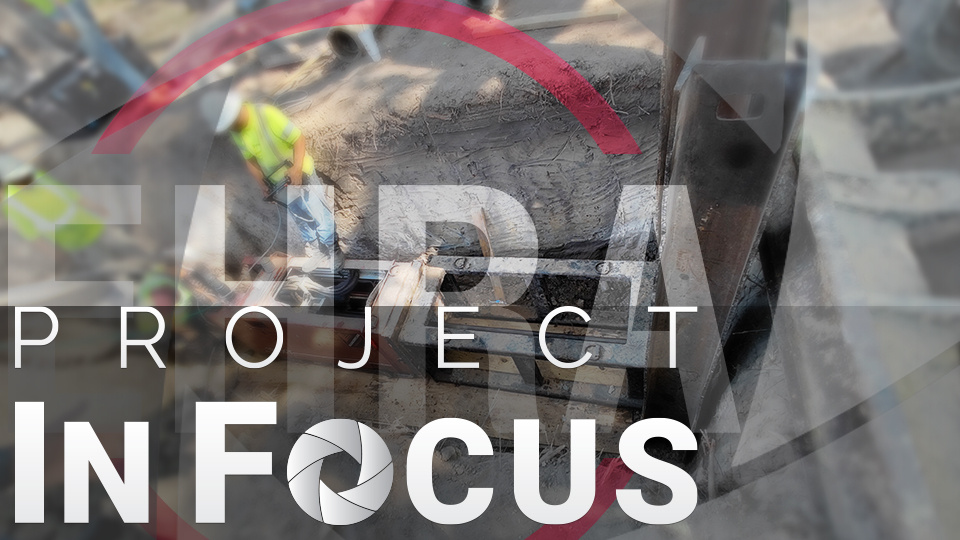

Identified as a top priority during the development of the District’s Parks Master Plan, this portion of trail was the first phase of over two miles of planned trails to provide connectivity and recreation for District residents.
EHRA assisted with the district creation of Montgomery County Municipal Utility District No. 126 to accommodate a ±329 acre master planned community located in northern Montgomery County in the City of Conroe, south of League Line Road, west of Longmire Road, and adjacent to Lake Conroe.
A 720-acre gated master planned community located off Telge Road, just north of Willow Creek. See how EHRA was involved in this project.
The new roadway design comprises of one-half major thoroughfare, conventional drainage, a 600-ft long bridge over Willow Fork Bayou, Retaining walls and intersection improvements at FM 1463 (including traffic signals and illumination).
EHRA completed preliminary engineering, phase one environmental site assessment and schematic development for the widening of Northpark Dr. between US 59 and Woodland Hills Dr. EHRA also provided program management, drainage analysis and design, traffic engineering, environmental documentation and schematic design for the roadway, as well as grade separation at the Loop 494/UPRR railroad crossing.
EHRA conducted traffic operations and access management studies for the Northpark Dr. corridor. This corridor is approximately 2.2 miles long and has major signalized and unsignalized intersections and driveways that access various subdivisions and industrial developments. These studies laid the groundwork for the widening of Northpark Dr. from a four-lane boulevard cross-section to a six-lane boulevard complete street. The new street design includes low impact development drainage, conventional drainage, a grade separation at the UPRR crossing with mechanically stabilized earth retaining walls, two at-grade crossings for bi-directional frontage access, reconstruction of two concrete bridges over a diversion channel, intersection improvements, a roadway-adjacent multiuse path and traffic signal improvements.
Drainage analysis and design included hydrologic and hydraulic studies of both existing and proposed conditions to demonstrate that proposed project components would not adversely affect the 100-year floodplain in the area. The roadway and traffic designs contained horizontal and vertical alignments, cross-sections, plan and profile, sidewalk and bicycle accommodations, intersection layouts, traffic control plans and signing and pavement markings.
As the program management firm, EHRA coordinated with TxDOT, UPRR, the City of Houston Council District E, COH Planning and Development Department, COH Public Works and Engineering Department, Montgomery County, Harris County, HCFCD and area residents throughout the project.
As the engineer for our Northwest Harris County Municipal Utility District (NWHCMUD) No. 6, one of our top priorities is the health and safety of our residents. One way we are tackling this need is through rehabilitation of NWHCMUD’s waterline. Aging infrastructure poses significant challenges, particularly concerning the reliability and safety of our water supply. Because of this, waterline rehabilitation projects are a critical initiative aimed at replacing outdated waterlines. This project will not only address immediate health concerns but also ensure the long-term viability of our water system.
Waterline rehabilitation projects are significant undertakings that can cost millions of dollars. To fund these initiatives, the district often relies on Water/Sewer/Drainage (WSD) bonds. These financial tools help ensure that necessary improvements can be made without placing significant strain on the district’s resources.
As district facilities age, the necessity for replacement becomes increasingly clear. One of the indications is the monthly accountability reports provided by the district operator in conjunction with the age of infrastructure. A typical lifespan for waterlines is 30-35 years. There are several methods for waterline replacement, with two prominent techniques being open trenching and pipebursting. Each method has its advantages; however, pipebursting stands out as an effective solution for replacing existing asbestos-cement waterlines. This technique utilizes the old waterline as a "pilot hole," allowing for a more efficient installation of new lines without extensive excavation.
Project Timeline and Coordination
We are expecting this project to span roughly six to eight months, during which careful planning and coordination are essential. Effective collaboration among the contractor, district operator and residents is crucial in minimizing disruptions to ensure a smooth process. The contractor can replace 300 to 400 linear feet of waterline each day, a pace that requires meticulous organization and execution.
Safety and Compliance
Before any replacement occurs, existing waterlines are treated and tested to meet Texas Commission on Environmental Quality (TCEQ) standards. Ensuring compliance with these regulations is vital for safeguarding public health and maintaining water quality.
The Construction Process
The construction phase will involve several key steps. At the beginning, the contractor will excavate two bore pits. One is used for inserting the new waterline, while the other accommodates the hydraulic equipment necessary for the installation. As the hydraulic equipment pulls the new line into place, a bursting head breaks apart the existing waterline, allowing the new line to "snake" through the established path, minimizing the need for extensive excavation and reducing surface disruption.
Once the new waterline is installed, the district operator will tap into it to restore services to residents, confirming a seamless transition from the old line to the new.
This waterline rehabilitation project in our MUD is a vital step toward maintaining the health and safety of our community. By replacing aging asbestos-cement waterlines with modern materials, we are not only addressing current risks but also investing in the future reliability of our water system. Through careful planning, effective communication and robust funding mechanisms, we can navigate this complex project successfully, ultimately enhancing the quality of life for all residents. Our commitment to safety and sustainability remains unwavering, ensuring safe and reliable district facilities for generations to come.
